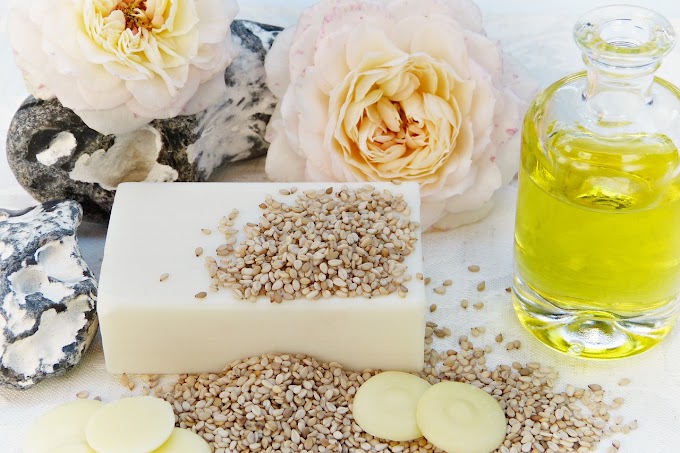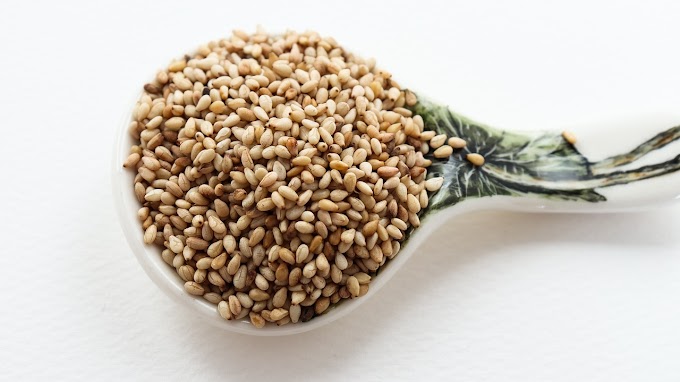Introduction
Turmeric, scientifically identified as Curcuma longa, stands out as a vibrant, golden-hued spice revered globally for its culinary allure and centuries-old medicinal significance. This exploration delves into the multifaceted marvel that is turmeric, tracing its rich history, health advantages, and practical suggestions for seamlessly incorporating it into daily life. Join us in unraveling the world of this "Golden Wonder." |
| Turmeric (Curcuma longa) |
Turmeric (Curcuma longa)
Origins of TurmericIndigenous to South Asia, turmeric has thrived for over 4,000 years. Initially used as a dye, it later gained acclaim as a valuable spice in Indian cuisine and Ayurvedic medicine. Harvested from the plant's rhizomes, or underground stems, turmeric is dried and ground into the vibrant yellow powder known to us.
Benefits of Turmeric
Potent Anti-Inflammatory Properties: The active compound, curcumin, in turmeric is renowned for its robust anti-inflammatory effects. It aids in reducing chronic inflammation, a common precursor to various diseases such as heart conditions, cancer, and arthritis.Antioxidant Boost: Packed with antioxidants, turmeric combats free radicals, shielding cells from oxidative damage and slowing down the aging process.
Potential Cancer Prevention: Some studies suggest curcumin's anti-cancer properties by inhibiting cancer cell growth and preventing tumor spread, showing promise though further research is needed.
Brain Health: Curcumin may enhance brain function and reduce the risk of neurodegenerative diseases like Alzheimer's, potentially elevating levels of brain-derived neurotrophic factor (BDNF), a growth hormone in the brain.
Digestive Aid: Traditionally used for digestion and reducing bloating, turmeric may assist with conditions such as irritable bowel syndrome (IBS).
Joint Health: Its anti-inflammatory properties make turmeric a popular remedy for joint pain and arthritis, with many reporting reduced pain and improved mobility through regular consumption.
Heart Health: Turmeric may decrease the risk of heart disease by improving endothelium function, reducing blood pressure, and lowering LDL cholesterol levels.
Turmeric into Your Routine
Turmeric Tea: Brew a soothing cup by adding a teaspoon of turmeric powder to hot water, enhancing the flavor with a squeeze of lemon and a touch of honey.Golden Milk: Create a creamy, flavorful golden milk by mixing turmeric, coconut milk, black pepper (to boost curcumin absorption), and a hint of honey.
Spice Up Your Cooking: Add turmeric to favorite recipes like curries, soups, stir-fries, and scrambled eggs for both flavor and health benefits.
Supplements: Turmeric supplements, available in various forms, should be approached cautiously. Consult with a healthcare professional before incorporating them into your routine.
Cultural Significance
Turmeric holds a special place in South Asian cultural traditions, featuring prominently in religious ceremonies, rituals, and traditional Indian weddings where it symbolizes blessings and purification.Beyond ceremonial use, turmeric is a staple in Indian culinary traditions, enriching dishes like curry with its earthy, slightly peppery flavor and vibrant color.
Turmeric Varieties
While Curcuma longa is the most common variety, there are other species with distinct flavors and aromas:Curcuma zedoaria (White Turmeric): Milder flavor, often used in Indonesian and Thai cuisines.
Curcuma aromatica (Wild or Musk Turmeric): Stronger smell, employed in Ayurvedic medicines and perfumes.
Curcuma zedoaria (Javanese Turmeric): Native to Indonesia, known for potential medicinal properties.
Each variety adds unique characteristics to the diverse and intriguing turmeric spice family.
Creative Uses of Turmeric
Face Masks: Combine turmeric with yogurt and honey for a natural face mask, leveraging its anti-inflammatory and antioxidant properties for skin benefits.Turmeric Paste: Prepare a paste with turmeric powder, water, coconut oil, or milk for topical application to soothe skin irritations or as a base for turmeric-infused dishes.
Smoothies: Add a pinch of turmeric to morning smoothies for an antioxidant boost and vibrant color.
Wound Healing: In traditional medicine, turmeric is applied to minor cuts and wounds for its antiseptic and healing properties.
Baking: Experiment with turmeric in baking recipes, introducing a unique twist to favorites like turmeric-infused bread or cookies.
A Word of Caution
While turmeric offers numerous health benefits, moderation is key. High doses of curcumin supplements may cause digestive discomfort or interact with certain medications. Always consult a healthcare professional before making significant dietary changes or adding new supplements.Exploration of Turmeric
Historical Reverence: Turmeric's historical significance extends beyond South Asia, reaching far-flung corners of the globe. Ancient cultures, from traditional Chinese medicine to ancient Greek practices, valued turmeric for its purported healing properties. Its journey from a revered dye to a global culinary and medicinal treasure reflects the enduring appeal of this golden spice.Modern Research: Recent scientific studies have delved into turmeric's potential benefits, propelling it into the spotlight of modern health discussions. Researchers continue to explore its applications in various fields, from chronic disease management to skincare, unveiling new dimensions of turmeric's multifaceted nature.
Creativity with Turmeric
Global Fusion: Turmeric has transcended cultural boundaries, making its way into fusion cuisines worldwide. From turmeric-infused lattes in trendy cafes to innovative recipes blending diverse culinary traditions, the spice has become a symbol of gastronomic exploration and creativity.Turmeric Elixirs: Beyond traditional teas and golden milk, inventive culinary enthusiasts have crafted turmeric elixirs, combining the spice with other health-boosting ingredients like ginger, cinnamon, and honey. These elixirs serve not only as delightful beverages but also as wellness companions.
Turmeric in Holistic Well-being
Mind-Body Connection: Beyond its physical health benefits, turmeric's presence extends into the realm of holistic well-being. Its vibrant color and rich aroma contribute to a sensory experience that transcends the plate, creating an ambiance of warmth and positivity in both culinary and self-care rituals.Mindful Consumption: Embracing turmeric goes beyond merely incorporating it into recipes; it involves mindful consumption. Whether sipping on turmeric tea for a moment of tranquility or applying a turmeric-based face mask for self-care, these intentional acts foster a deeper connection with the spice and its well-being attributes.
Turmeric in Art and Culture
Artistic Inspiration: Turmeric's vivid color has inspired artists across various mediums. From paintings capturing the essence of Indian spice markets to sculptures embodying the curves of turmeric roots, the spice has become a muse for creative expression, bridging the worlds of art and gastronomy.Cultural Festivals: Turmeric takes center stage in cultural celebrations and festivals, where its vibrant hue symbolizes prosperity, purity, and auspicious beginnings. These festivals showcase the spice's cultural significance, weaving it into the fabric of traditions and celebrations.
Environmental Impact and Sustainability
Turmeric Farming Practices: The environmental impact of turmeric cultivation is integral to sustainable practices. Some regions have embraced organic farming methods, avoiding harmful pesticides and promoting biodiversity. This conscious approach not only ensures the purity of the spice but also safeguards the ecosystems supporting its growth.Ethical Sourcing: Consumers increasingly seek ethically sourced turmeric, driving demand for fair trade and environmentally friendly practices. Supporting initiatives that prioritize the well-being of farmers and the planet aligns with a broader movement toward conscious consumerism.
Turmeric's Ongoing Evolution
Innovations in Processing: Advances in processing techniques have led to innovations like turmeric extracts and concentrated forms, making it more convenient for individuals to harness the spice's benefits. These developments highlight turmeric's adaptability to modern lifestyles.Integration in Alternative Therapies: Turmeric has found its way into alternative therapies such as aromatherapy and herbal supplements. As holistic approaches to well-being gain traction, turmeric emerges as a versatile ally in promoting balance and vitality.
Conclusion
Turmeric's journey from ancient dye to a global culinary sensation and holistic wellness staple reflects its timeless allure. As we continue to uncover new facets of its potential, turmeric remains a golden thread connecting cultures, cuisines, and well-being practices worldwide. So, whether you're savoring a turmeric-infused dish, indulging in a mindful self-care ritual, or exploring its cultural and artistic significance, the "Golden Wonder" continues to shine bright on our journey towards a harmonious and vibrant existence.
FAQ's
1. Why is turmeric referred to as the "Golden Wonder?"Turmeric earns the moniker "Golden Wonder" due to its vibrant golden color and a myriad of benefits, ranging from culinary uses to its historical significance and potential health properties. This term captures the awe and admiration that this spice has garnered over centuries.
2. What are the different varieties of turmeric, and how do they differ?
While Curcuma longa is the most common variety, there are others such as Curcuma zedoaria (White Turmeric), Curcuma aromatica (Wild or Musk Turmeric), and Curcuma zedoaria (Javanese Turmeric). Each variety has its own unique flavor, aroma, and potential medicinal properties, adding diversity to the turmeric spice family.
3. How can turmeric be used in skincare routines?
Turmeric can be combined with ingredients like yogurt and honey to create a natural face mask. Its anti-inflammatory and antioxidant properties may help reduce skin breakouts and brighten the skin. Additionally, turmeric paste can be used topically to soothe skin irritations.
4. Are there potential side effects or considerations when consuming turmeric?
While turmeric offers numerous health benefits, high doses of curcumin supplements may cause digestive discomfort or interact with certain medications. It's crucial to use turmeric in moderation. Individuals with existing medical conditions or those on specific medications should consult a healthcare professional before making significant dietary changes.
5. How can I incorporate turmeric into my daily routine, apart from cooking?
Turmeric can be integrated into your routine through various creative methods. You can enjoy turmeric tea, make golden milk, add it to smoothies, use it in baking, or even create turmeric elixirs with complementary ingredients like ginger and honey. The possibilities are diverse and can cater to both culinary and well-being preferences.
6. What is the cultural significance of turmeric in South Asia?
Turmeric holds a special place in South Asian cultural traditions. It is used in religious ceremonies, rituals, and traditional Indian weddings, symbolizing blessings and purification. Additionally, turmeric is a staple in Indian culinary traditions, adding depth and complexity to a wide range of dishes.
7. How has turmeric evolved over time, and what is its modern relevance?
Turmeric has evolved from its ancient use as a dye to becoming a global culinary sensation and a subject of modern health discussions. Recent research has explored its potential benefits, propelling turmeric into various fields, including chronic disease management, skin care, and holistic well-being.
8. Is there a sustainable and ethical aspect to turmeric consumption?
Yes, consumers are increasingly seeking ethically sourced turmeric. This involves supporting fair trade practices, environmentally friendly farming methods, and initiatives that prioritize the well-being of farmers. Conscious consumerism plays a role in promoting sustainability within the turmeric industry.
9. How can turmeric be integrated into alternative therapies?
Turmeric has found its way into alternative therapies such as aromatherapy and herbal supplements. As holistic approaches to well-being gain traction, turmeric emerges as a versatile ally in promoting balance and vitality. Its adaptability to modern lifestyles is reflected in innovations like extracts and concentrated forms.
10. What makes turmeric a symbol of gastronomic exploration and creativity?
Turmeric's versatile and distinctive flavor, coupled with its vibrant color, has inspired culinary enthusiasts worldwide. From traditional recipes to contemporary fusion cuisines, turmeric serves as a symbol of gastronomic exploration and creativity, transcending cultural boundaries and enriching global culinary experiences.







